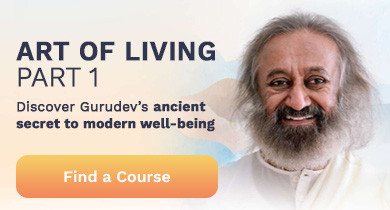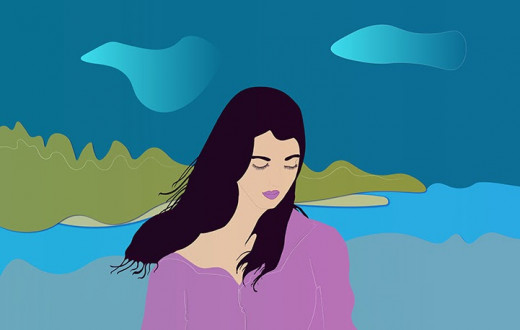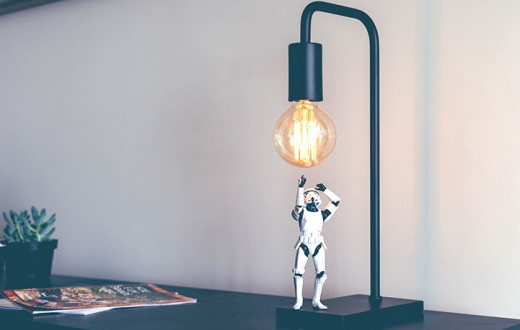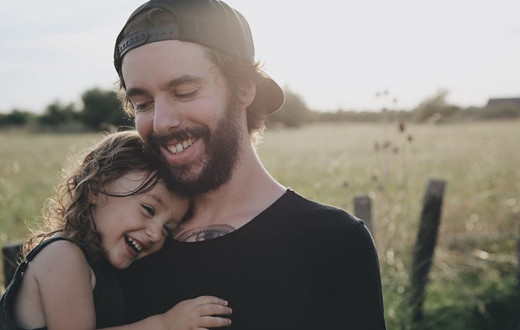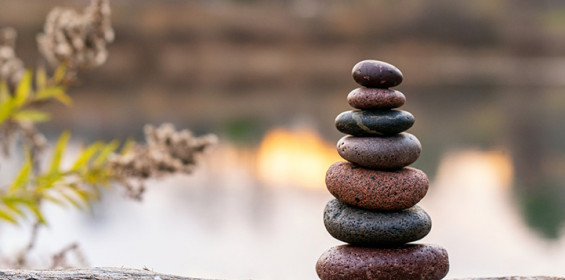By Sejal Shah
9 basic and advanced breathing exercises in yoga for body-mind health, healing, and harmony. Beginner’s instructions and tips included. Learn now.
Quiz time!
Let us begin with some multiple-choice questions today! As you answer each question, write down your answer in your notepad. Let us see how many you get them right. Ready?
down your answer in your notepad. Let us see how many you get them right. Ready?
1. What is the first act of life as you are born and what is the last act of life as you die?
A. Kick and cry
B. Inhale and exhale
C. Open and close your eyes
2. How many breaths does an average person take in a day?
A. 5,000
B. 10,000
C. 22,000
3. How much air do you roughly breathe every day?
A. 7,000 liters
B. 11,000 liters
C. 5,000 liters
4. How big are your two lungs and where are they located in your body?
A. From clavicle to the last rib, filling from front of the chest to the back
B. In the middle of your chest on either side
C. In the chest cavity from 2nd to the 10th rib
5. The way you breathe influences your state of mind and your quality of life?
A. True
B. False
C. Don’t know
********
Did you note all your answers?
Now, let us verify. Hold on tight! The correct answers are:
Question 1 - Inhale and exhale. The first thing we do is breathe in, and the last is to exhale. Your breath is with you from birth ‘til death, your faithful companion for a lifetime!
Question 2 - 22,000 breaths per day! That sounds like a lot, right? You might be thinking “Really? Do I really breathe 22,000 times per day?!” The answer is yes!
Question 3 - 11,000 liters. Again, quite shocking! That’s a lot of air that you take in every day.
Question 4 - Your lungs fill the entire rib cage, front and back of your chest. They are big organs!
Question 5 - True! This might be the most surprising. That the way you breathe influences your state of mind. The good news is you can use your breath to improve the state of your mind!
The majority of us have very little knowledge about our breath. We hardly pay attention to our breath and the way we breathe! We don’t even realize that we are breathing unless we are panting while climbing the stairs or walking uphill.
But breathing is the very essence of life. Apart from sustaining our life, the key to healthy and happy living may lie in the right way of breathing. When we attend to our breath, it brings us to the present moment, increases our self-awareness, and brings a sense of calm. Who wouldn’t like to have such a state of mind?
For thousands of years, yoga has advocated pranayama or breathing techniques to maintain, balance, and restore physical, mental, emotional, and spiritual health.
Let us learn some breathing techniques and what are their other benefits.
Benefits of pranayama: breathing exercise in yoga
The simplest and safest breathing exercise for calming both the nervous system and the overworked mind is a timed way of breathing, keeping the exhalation slightly longer than the inhalation. For example, inhale gently for 4 counts and exhale gently for 6 counts. Breathing in this way for at least five minutes will bring about a difference in your overall state of mind. Because it is so simple, anyone can do this basic deep breathing exercise without having to learn from a teacher.
Pranayama goes a step further than a simple awareness of the breath exercise, using specific rhythms and techniques to bring us numerous benefits to all of our existence: body, mind, spirit!
At the level of the body:
Releases bodily toxins
Boosts the immune system
Rejuvenates the body and mind
Slows down the aging process
Facilitates muscle relaxation
Lowers or stabilizes blood pressure
Improves digestion, metabolism, and assimilation
At the level of the mind:
Calms the mind, reducing worries and tensions
Improves focus and attention, removing brain fog
Increases energy, bringing enthusiasm and positivity
Increases resilience against anxiety, depression, and stress
At the level of the spirit:
Unveils the inner light (Patanjali Yoga Sutra 2.52)
Connects to the higher state of consciousness
Pranayama techniques: cautions while practicing
Ancient yogis have detailed different types of rhythmic deep breathing techniques called pranayama. Each of these breathing techniques has specific effects on the mind-body continuum. They are an amazing tool when used skillfully. Emphasis on skillfully! Traditionally techniques like this would be taught under the tutelage of a teacher.
The 15th century Hatha Yoga Pradipika is a key text and includes various forms of pranayama such as Kumbhaka (breath retention) and other forms of pranayama.
However, the 16th sutra in the second chapter of Hatha Yoga Pradipika cautions:
When Prânayama are performed properly, they eradicate all diseases; but an improper practice generates diseases. (2.16)
Therefore, if you want to get serious about incorporating pranayama into your practice and want to enjoy the previously mentioned benefits, it’s important to learn from a teacher (more on that later!).
“But I wanted to get started now!” I hear you thinking! Don’t worry, I’ve got you covered. Here are 9 pranayamas, some of them are basic, some are advanced. I have provided some easy instructions and tips for each one for you to begin. Though they sound pretty easy to practice, yet it is advisable to learn them with a teacher and I’ll also tell you how you can get a teacher to unlock the full benefits of a traditional pranayama practice. Teachers will ensure that what you are practicing is right and they can also correct you if necessary.
Pranayama techniques: the top 9 breathing exercises in yoga
Let us go over some of the popular pranayamas. These are beginner-level instructions so somewhat vary from how they are explained in the above ancient texts. For the full benefits of each of these, please learn them with a trained teacher.
1. Full yogic breath
How to do and benefits:
With this breathing, we learn to make full use of the lung capacity and involve all the muscles of respiration. As you inhale gradually and longer, expand your belly, continue to breathe in, expand your chest, continue and lift your collarbones expanding your shoulders. After the full inhalation, start to exhale as you relax your shoulders, chest, and abdomen. Repeat 7-10 times. Keep your breath long, even, and smooth.
Benefits: Centers your mind. Expands your lung capacity.
Beginner’s tips: Don’t tense your face or throat or shoulders.
Contraindications: Recent abdominal surgery
2. Nadi Shodhan Pranayama or Alternate Nostril Breathing
How to do and benefits:
A yogic practice that immediately helps you to feel calmer whenever you are feeling anxious or agitated.
Can't focus on the task at hand? Try five to nine rounds of Nadi Shodhan pranayama (Alternate Nostril Breathing). In this, you inhale and exhale alternately through the right nostril and left nostril in a specific pattern. Learn here.
The Nadi Shodhan pranayama calms and centers the mind by bringing into harmony the left and right hemispheres of the brain which correlate to the logical and emotional sides of our personality.
Beginner’s tips:
The breathing pattern is breath out, breathe in, switch sides.
Do not force the breath - keep it gentle and natural, smooth and even without creating force or pressure. Do not breathe through the mouth or make any sound such as in Ujjayi breath.
Place the fingers very lightly on the forehead and nose without any pressure.
If your nose is stuffy, clear it before you begin with this practice.
Contraindications: None.
3. Bhrahmari or the humming breath
How to do and benefits:
Is your mind buzzing with activity? Find a quiet corner and try the Humming Bee Breath (Bhramari Pranayama) to apply brakes in the buzzing mind. In this, you inhale deeply and then make the humming sound as you exhale while keeping your ears gently closed. This breathing technique is especially useful for those with hypertension. An instant way to relieve tension, anger, and anxiety. Helps with improving your memory too.
Beginners tips:
Ensure that you’re not putting your finger inside the ear but on the cartilage.
Don’t press the cartilage too hard. Gently press and release with the finger.
While making the humming sound, keep your mouth closed.
Remove ear wax if it is too much and clogging your ears.
Contraindications: Extremely high blood pressure, epilepsy, chest pain, or an active ear infection.
You can learn more about Full yogic breath, alternate nostril breathing, and bee breathing with a certified teacher at Sri Sri Yoga Foundation Program.
4. Ujjayi or Ocean Breath
How to do and benefits:
More than any technique, Ujjayi (Victorious Breath) is a clear demonstration of the connection between our breath and emotions. In this, we create a snore-like sound in the throat as we inhale and exhale. Many use Ujjayi breathing during their asana practice.
Inhale slightly deeper than normal. Exhale through your nose with your mouth closed and constricting muscles at the back of your throat. If done correctly, this should sound like waves on the ocean. Learn here:
Beginner’s tips: Let your breath be slow, soft, deep, and long without any tension or force in the throat muscles. Let it come as naturally as possible.
Contraindications: Very low blood pressure
4. Bhastrika or Bellows Breath
How to do and benefits:
Low energy levels? Three rounds of Bhastrika pranayama (Bellows Breath) quickly and powerfully increases your energy and calms the mind. In this, we inhale and exhale somewhat vigorously.
Beginner’s tips: Both inhale and exhale are vigorous but do not use so much force that it starts distorting your face.
Contraindications: Pregnant women, people with uncontrolled hypertension, cardiovascular disease, recent major surgery, glaucoma, or other conditions of increased eye pressure, or those with strong imbalanced pitta (pitta is an ayurvedic term for the inner fire element dosha).
You can learn more about Ujjayi and Bhastrika pranayama with a trained teacher at Art of Living’s SKY Breath Meditation course.
5. Surya Bhedana or The Solar Breath
How to do and benefits:
Somewhat similar to Nadi Shodhan, but only inhale through the right nostril and exhale through the left for 7-10 rounds.
Benefits include heating and warming breaths that help balance Vata in the body.
Beginner’s tips: It is better to avoid this in the summer season.
Contraindications: Heart disease, hypertension, epilepsy, hyperthyroidism, peptic ulcer, and acidity.
6. Chandra Bhedana or The Lunar Breath
How to do and benefits:
This is the counterpart to The Solar Breath. Inhale through the left nostril and exhale through the right for 7-10 rounds. This cooling breath process helps reduce pitta.
Beginner’s tips: It is better to avoid this in the winter season.
Contraindications: Depression, who have mental disturbances, excess mucus, and sluggish digestion.
8. Sheetkari pranayama or The Hissing Breath
How to do and benefits:
Feeling very hot on a summer day? Try Sheetkari pranayama. Keep your tongue behind your upper and lower teeth. With a hissing sound gently inhale through your mouth and then gently exhale through your nose. Repeat for 5-9 rounds. In addition to reducing pitta, benefits include purification of the senses, strengthens your gums, reduces bad odor from the mouth.
Beginner’s tips: Don’t practice this in dirty polluted environments and cold weather. Pay attention so that you don’t bite your tongue.
Contraindications: Low BP, asthma, bronchitis, cold, cough, chronic constipation, sensitive teeth, loose dentures.
9. Sheetali pranayama or The Cooling Breath
How to do and benefits:
Extend your tongue outside of your mouth. Roll the sides of your tongue lengthwise so that it forms a tube. Inhale deeply through the tube. Take the tongue in, close your mouth, then exhale through the nose. Repeat for 5-9 rounds.
Benefits, beginner’s tips, contraindications are the same as Sheetkari pranayama.
You can learn Surya Bhedan, Chandra Bhedan, Sheetkari, and Sheetali pranayama at Sri Sri Yoga Deep Dive Retreat under the guidance of a well-trained teacher.
Beyond pranayama: SKY Breath Meditation
SKY Breath Meditation takes you one step further in your exploration of pranayama and bridges the gap between breathwork and meditation. SKY, a unique yogic breathing practice, involves several types of cyclical breathing patterns, ranging from slow and calming to rapid and stimulating. Here is what modern research is saying about SKY and here is how it will benefit you in so many ways.
Learn more fun facts about breath and SKY at Beyond Breath
Breathe in and breathe out with us and get a first-hand experience of Bhastrika Pranayama and a guided meditation by joining our free online interactive session Beyond Breath! Reserve your free spot now!
Enjoy your pranayama practice!
Sejal Shah, E-RYT 500 Sri Sri Yoga Teacher, YACEP, C-IAYT, Meditation Teacher, SKY Instructor, NYU Post Graduate Medical School approved Yoga-CME retreat facilitator, Mind-Body Wellness Writer, Homeopath. She can be followed on YouTube, Instagram, Twitter, and Facebook.
